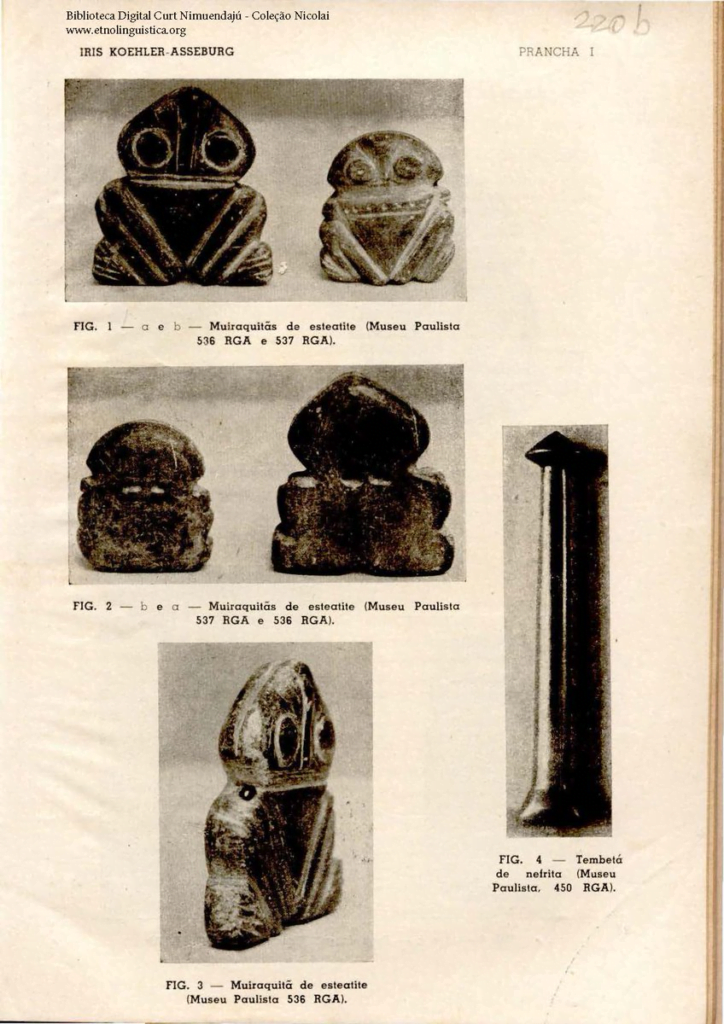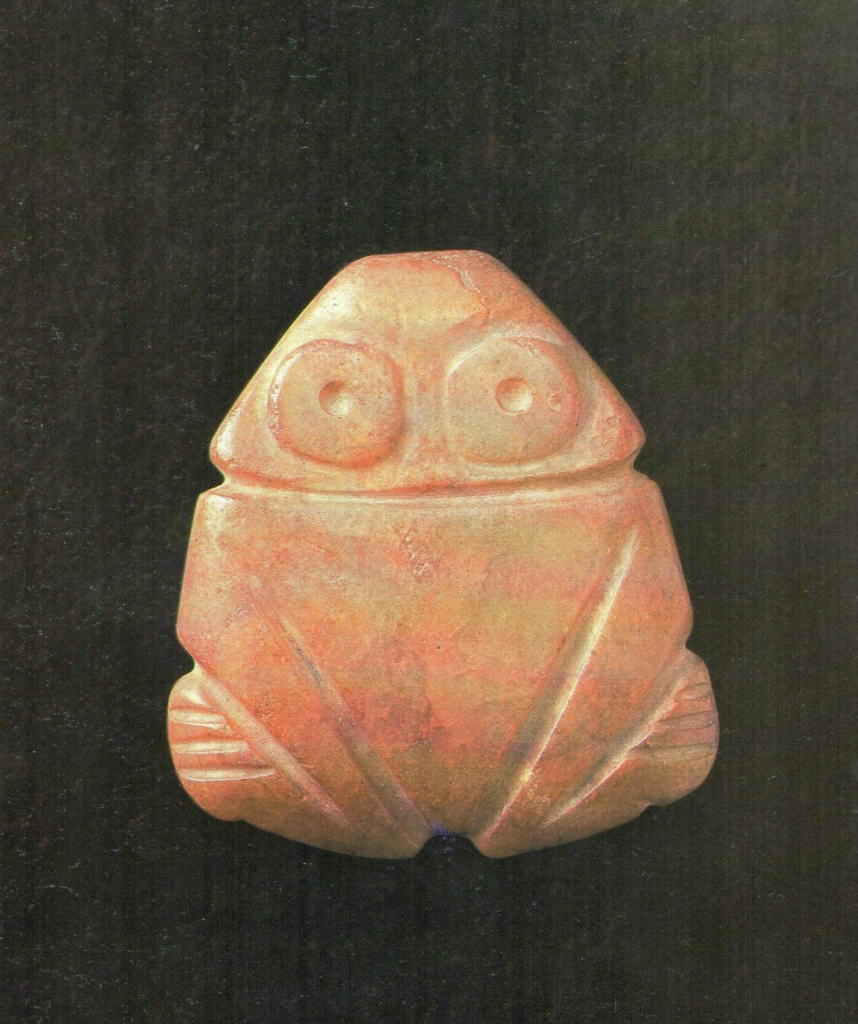The Legend of Muiraquitã

The history of Muiraquitã begins with the legend of the Amazons, a group of female warriors. Although the idea of the existence of these women with unique characteristics, such as man's breasts (Icamiabas) or the absence of breasts (Amazonas), is a Greek legend, in the Amazon region, this conception was introduced around June 24, 1542, during the famous Battle of Icamiabas.
In that event, the Spanish chose to withdraw to avoid defeat. The chronicler of the expedition, Friar Gaspar de Carvajal, described these women as tall, with hair wrapped around their heads, and their private parts covered. This description left doubts about their sex.
The Icamiabas

Legend has it that, 400 or 600 years ago, in remote times, there existed, among the different tribes that inhabited the Amazon region, a tribe exclusively made up of women. These women, known as Icamiabas at that time, were skilled in the arts of war and were reputed as brave and invincible warriors. Such was his fame that not even the most audacious warrior dared to enter his tribe's territory.
Contrary to the tradition of female fragility, the Icamiabas assumed all the responsibilities traditionally attributed to men. They hunted, fought and worshiped their own gods without depending on the male presence, thus building a strong and feared nation that, over time, would become known as the Amazons.
However, the power and independence of these warriors were not enough for the continuation of their tribe, as they needed the presence of men to reproduce. For this reason, on certain occasions, they made exceptions to their strict laws and welcomed groups of men from neighboring tribes into the village, on the banks of Lake Jaci-Uaurá.
It was a period of festivities. During the full moon, men traveled from distant regions, sailing the abundant rivers, eager to take advantage of the only opportunity to enter the territory of the warrior women and be with them. Religious ceremonies took place on the last night of the men's stay in the village. The women accompanied us to the banks of the lake and, in honor of Jaci, the Moon, the mother of fruits, they sang songs and prayers.
When the serene surface of the waters reflected the intense luminosity of the Moon, the women dived into the lake and swam to the bottom, where they met the Mother of Muiraquitã. From their hands, they received a green clay substance, with which they sculpted small figures, such as turtles, fish, cylinders or any other inspiration.
Upon emerging, these small sculptures, still malleable, hardened like stone. Small, green and shiny, these talismans then fulfilled their purpose. On that night of love, the Icamiabas affectionately handed over the small jewels to their chosen ones. The Muiraquitãs, transformed into trophies, were used by men, who hung them around their necks to receive magical protection, acquiring power over other men.
These small sculptures, venerated as powerful talismans, were passed down from generation to generation to the children of these warriors, as an inheritance from the moment their tribes triumphed over the fearsome female warriors. The Icamiabas, on the other hand, after the gestation period, separated the born boys, who were sacrificed, while they educated the girls in the arts of war.
The Historical Origins of the Muiraquitãs
The Muiraquitãs have their first recorded appearances in the Lower Amazon River region, especially near the Tapajós River, close to Santarém. This area is also known for its famous archaeological traditions, such as the Tapajó culture, which left a legacy of polychrome ceramics and funerary urns.

Many authors have already established that the muiraquitãs were artifacts of the Tapajó and Conduri cultures, along with the stone idols and ceramics with zoomorphic appliqués, found in the region. Even among the Tapajó, these idols were used in rituals, involving ancestral mummies, but most of them are in museums abroad and a few in Brazil.
Furthermore, these amulets were found on Marajó Island, near Manaus, in the Upper Rio Negro, and even outside Brazil, as in 1951, when Muiraquitãs were discovered carved into nephrite rocks.
The Making of Muiraquitãs

Making Muiraquitãs is an intricate process that involves several steps. Initially, the raw material, typically a jadeite rock, was shaped and drilled with other rock objects or animal bones. To make the holes, artisans used water and fine sand to create the necessary pressure.
After drilling the holes, the piece was polished with pebbles, making it smoother and rounding the sides. This process required patience, skill and time, as the rocks were not easy to modify, especially in the case of the smaller Muiraquitãs.
Ceramic Muiraquitãs
In addition to the versions carved in rocks, the Muiraquitãs were also made in ceramics. The ceramic making process is different and involves modeling the amulet in clay, creating incisions and firing at high temperatures. These ceramic amulets are less common, but still reveal the richness of indigenous culture.
Meaning and Symbolism
Although interpretations and versions of Muiraquitãs may vary, there is a general consensus that these amulets are considered carriers of good energy and have the ability to bring positive things to those who have them. They are appreciated not only for their symbolic value, but also for their beauty and cultural importance in the Amazon region.
But if you want to know, there are several theories about their meaning and one of them suggests that they are related to fertility. This is due to the fact that frogs, which are often represented in Muiraquitãs, have a rapid ability to reproduce, and the shape of these amulets resembles the anatomy of the female body, which can symbolize fertility.
References
The Legend of Muiraquitã (ecoamazonia.org.br)
Muiraquitã, sculpture in the shape of a frog – Brazilian Archeology | National Museum – UFRJ